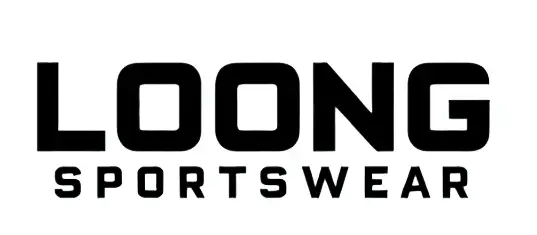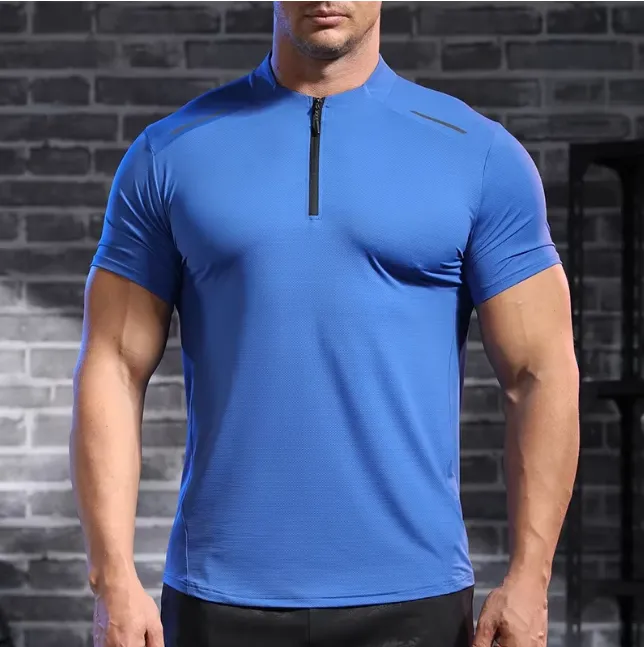Have you ever wondered what activewear is, and what the differences are between activewear and sportswear?
We have compiled a complete guide for everything you need to know about activewear with its styles, trends, buying tips and the differences from sportswear. We hope that this article can help to point you in the right direction and enhance your knowledge of activewear.
Note: The content listed are not ranked in any particular order.
Disclaimer: The company names, founding dates, and addresses are sourced from publicly available information online.
Please note: This article is not exhaustive. There may be other reputable activewear companies worth considering.
Table of Content
- What Is Activewear?
- How Activewear Became a Global Trend
- Types of Activewear Apparel
- Top Activewear Apparel Categories
- How to Choose the Right Activewear Apparel for Your Needs
- Buying Activewear Online vs In Physical Store
- Global Trends in Activewear Apparel
- Starting Your Own Activewear Brand
- FAQ
What Is Activewear?
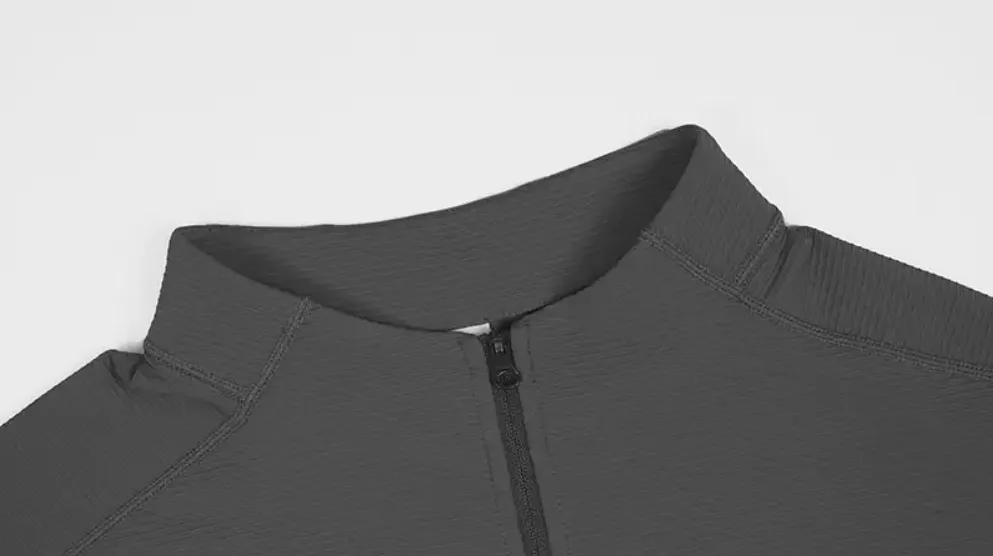
Activewear refers to clothing specifically engineered to support physical activity, think moisture-wicking fabrics, stretchy materials, and ergonomic fits. Unlike simple casual wear, activewear blends functionality (e.g., breathability, sweat control, compression) with style, allowing it to transition seamlessly between workouts and everyday wear.
Today, activewear goes beyond performance or gym clothes. Activewear apparel items are designed for comfort, versatility, and aesthetic appeal, making them ideal for running errands, lounge days, or athleisure fashion. The global trend toward “fitleisure” (fitness + leisure) underscores cultural power of activewear.
Activewear vs Sportswear: What is the Difference?
Though often used interchangeably, activewear and sportswear have distinct meanings. Sportswear tends to be sport-specific, e.g., baseball jerseys or soccer kits, while activewear remains versatile, suitable for general fitness, travel, and lifestyle activities. Understanding this distinction helps in effective keyword targeting and user satisfaction.
Here is a chart of the differences between activewear and sportswear listed below.
| Feature | Activewear | Sportswear |
|---|---|---|
| Definition | Focuses on comfort and versatile, lifestyle-inspired athletic fashion and casual | Specifically designed for athletic performance and function |
| Apparel Types | Yoga pants, active sets, casual hoodies, crop tops | Soccer jerseys, basketball uniforms, running tees, training suits |
| Occasions | Gym, casual outings, lounging at home, light workouts, Gym, casual outings, errands, travel, lounging | Sports competitions, training sessions, running, gym workouts, team sports, Training, games, athletic competition |
| Design Focus | Fashionable, versatile, comfortable, form-fitting cuts | Breathability, quick-dry, sweat resistance, stretchability, performance-enhancing |
| Materials | Cotton blends, Lycra, spandex, stretchy fabrics, Stretchy, moisture-wicking, breathable materials like spandex blends | Polyester, nylon, technical fabrics (e.g., Dri-Fit), Technical fabrics, compression textiles, ventilated mesh |
| Style Orientation | More trendy, youth-driven, gym-to-streetwear, fashion-forward, streetwear influence (athleisure | Function-first, performance-optimized |
| Primary Function | Designed for both exercise and everyday wear | Designed specifically for sports or physical activity |
| Popular Items | Yoga leggings, crop tops, joggers, sports bras (worn casually too) | Soccer jerseys, track suits, basketball shorts, compression shirts |
Their differences between countries
- United States & Canada, “Activewear” is the dominant term in fashion, retail, and marketing. Strong association with athleisure, a trend blending fitness and lifestyle. Used by brands like Lululemon, Gymshark, Alo Yoga, and Outdoor Voices.
- United Kingdom & Commonwealth (e.g., Australia, South Africa), “Sportswear” is more common in traditional usage, but “activewear” has gained popularity with the rise of fitness influencers and e-commerce. British consumers often refer to “trainers” (sneakers) and “sports kits” more than “activewear sets.”
- During European Countries, In Germany, France, and Italy, the English word “sportswear” is still widely used by brands and consumers, especially in retail translations. “Activewear” is growing in digital marketing due to its link with global fitness and lifestyle branding.
- Asia (China, Japan, South Korea), In China, “运动服” (sportswear) is the traditional term, but in cross-border e-commerce, “activewear” is commonly used to attract global buyers. In Japan and Korea, Western trends dominate, “activewear” is used by millennials and Gen Z consumers, often linked to luxury fitness lifestyles.
- In Middle East, “Sportswear” remains the more traditional term, but fashion-forward consumers in urban areas increasingly search for “modest activewear” or “athleisure” on e-commerce platforms.
How Activewear Became a Global Trend

Over the past decade, global activewear has exploded. Fitness culture, influencer impact, and the rise of athleisure turned workout gear into a fashion staple. Brands like Lululemon pioneered elevated performance wear, while fast-fashion retailers and direct-to-consumer (DTC) startups broadened the market with affordable, stylish alternatives.
The key factors that are fueling the active industry
- Fitness meets fashion, today, yoga class-to-café outfits are fair game.
- Material innovation, tech is now woven into your clothes via moisture-wicking, compression, anti-odor fabrics.
- Social media, instagram and TikTok have turned workouts into style opportunities.
- Inclusivity, size diversity and gender-neutral designs ensure broader appeal.
- Growth statistics and market size, the global activewear market was valued at $345B in 2023, forecast to hit $450B by 2026.
- North America and Europe lead, but Asia-Pacific (especially China, India) show the fastest expansion.
- E-commerce now commands 40% of sales, with growing importance in livestream selling, omnichannel retail, and subscription services.
Types of Activewear Apparel
Activewear apparel comes in a wide range of styles designed to support movement while offering comfort and versatility. Common types include activewear for men, activewear for women and activewear for kids, such as sports polos, coolmax dri fit t-shirts, basketball jerseys and shorts, sweatshirts and sweatpants, yoga pants, leggings, sports bras, tank tops, hoodies, and crop tops, which are often made with stretchable, breathable materials like Lycra, spandex, and cotton blends. These items are typically worn during light to moderate workouts, such as yoga, pilates, and gym sessions, but are also popular for casual, everyday wear.
In addition to fitness-focused pieces, activewear also includes athleisure styles, garments that blend sporty functionality with streetwear aesthetics. This includes items like joggers, zip-up jackets, and seamless matching sets that transition effortlessly from the gym to errands or social outings. The key characteristic of activewear is its dual-purpose design: stylish enough for daily wear, yet functional enough for physical activity.
Activewear for Men, male activewear increasingly blurs the line between gym staples and everyday style. Top categories include:
- Compression tops & tees with muscle support and moisture control.
- Joggers & shorts are blending of athletic & streetwear models.
- Athletic tanks are ideal for summer workouts, often anti-microbial.
- Layering pieces such as hoodies, zip-ups, and running jackets.
Activewear for Women, women’s activewear leads the innovation charge from leggings to sports bras.
- High-waist leggings are available in squat-proof, 7/8 lengths, or seamless styles.
- Sports bras are categorized by impact level, using encapsulation or compression.
- Matching sets are a huge trend in athleisure.
- Skorts, crops, and bodysuits are blending function and fashion.
Unisex & Plus-Size Activewear Options
- Unisex hoodies, oversized tees, and joggers are common staples.
- Plus-size activewear supports full range of motion with design features like gussets and curved sizing.
High Performance Fabrics Used in Activewear
High performance fabrics used in activewear are specially engineered to enhance comfort, flexibility, and durability during physical activity. Common materials include polyester, nylon, spandex, and Lycra, all known for their moisture-wicking, quick-drying, and breathable properties. Some advanced fabrics also offer UV protection, odor resistance, and compression support, making them ideal for workouts, outdoor sports, and high-intensity training. These fabrics allow for greater mobility while maintaining shape and performance over time. Fabrics define performance. Common technical textiles include:
- Moisture-wicking blends with polyester/spandex mixes that pull moisture away from the skin.
- Anti-odor technology is treated with silver ions or antimicrobial agents.
- Compression weaves improve circulation and muscle support.
- Eco-friendly fibers such as recycled polyester, organic cotton, and bamboo blends.
Top Activewear Apparel Categories
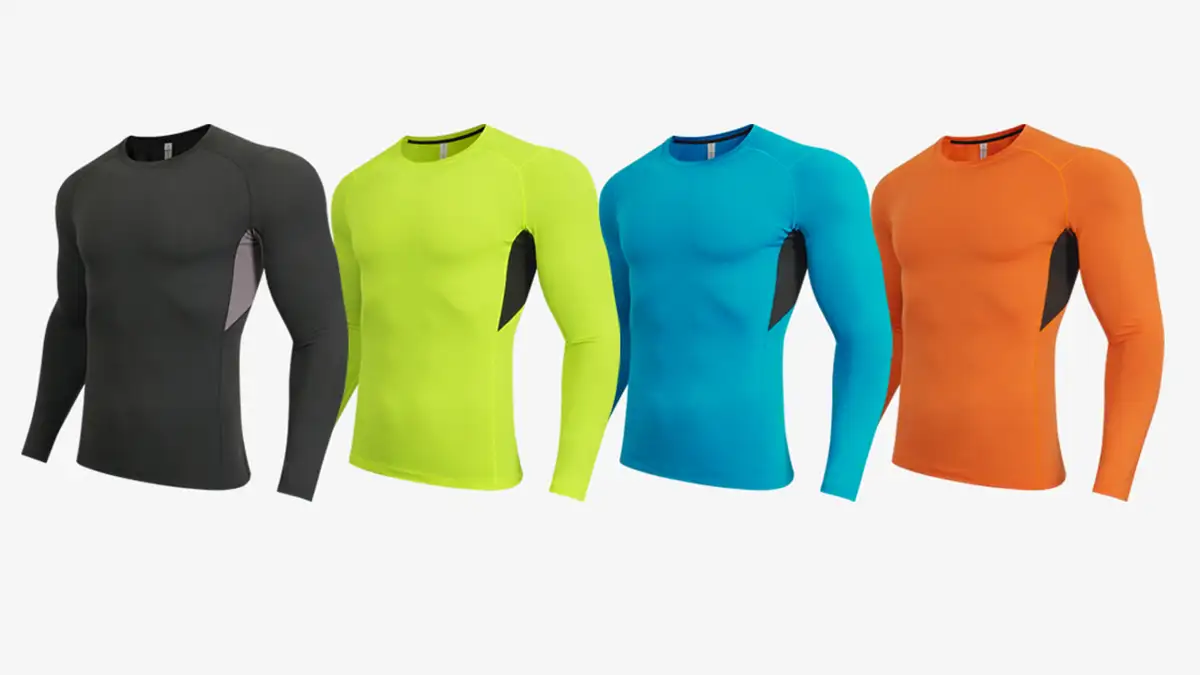
Activewear is divided into several key categories based on activity type and functionality. Yoga and pilates wear includes soft, stretchable pieces like leggings, sports bras, and seamless tops designed for flexibility and comfort. Training and gym apparel covers performance-driven clothing such as compression shirts, moisture-wicking tank tops, and breathable shorts or joggers built to support strength and endurance workouts. Running and cardio wear focuses on lightweight, sweat-resistant gear that enhances movement and ventilation, such as quick-dry tees, running tights, and reflective jackets.
Another major category is athleisure, which blends athletic wear with street style for casual everyday use. These pieces, including hoodies, biker shorts, and matching sets, are designed to transition seamlessly from workouts to social settings. Outdoor and performance wear—like insulated jackets, windbreakers, and thermal leggings—caters to activities such as hiking or outdoor fitness in varied weather conditions. Each category meets different lifestyle and training needs, offering consumers a blend of style, comfort, and function.
Yoga Wear
Including seamless sets, high-waisted leggings, and breathable bras, yoga wear requires stretch, comfort, and opacity during movement.
- Seamless knit sets reduce chafing and create smooth lines under the skin.
- High-waist waistband offers belly support and flattering shape.
- Lightweight, breathable bras with adjustable straps ensure comfort in different poses.
For example, compression t-shirts, tank tops, and shorts, gym warriors need apparel that performs well
- Compression shirts reduce muscle fatigue and improve circulation.
- Breathable tank tops with mesh or laser cutouts maximize airflow.
- Performance shorts often include Liner and pockets for function-driven workouts.
Such as lightweight jackets, sweat-wicking tights. For avid runners, key pieces require
- Windbreaker jackets with heat-sealed seams offer weather protection without bulk.
- Reflective panels ensure safety in low light.
- Thermal or sweat-wicking tights maintain body temperature and comfort.
Athleisure
Athleisure is the activewear designed for everyday fashion, and casual activewear brings comfort to daily life. Fashion-forward leggings and hoodies can be styled beyond the gym. Slide-friendly tops, cropped sweatshirts, and dress-leggings cross boundaries.
Eco-Friendly Activewear
Eco-friendly activewear has sustainable materials and ethical Brands. Recycled polyester from post-consumer plastics is now mainstream. Bamboo and organic cotton blends offer comfort and natural fibers. Transparency and traceability, brands highlight fair labor and closed-loop recycling.
Some of The Best Activewear Brands in the US
The American market continues to lead in quality and innovation. Below are some of the best activewear brands in the US.
- Nike: Merging technical innovation with everyday style, Nike dominates with Dri-FIT, Flyknit, and React fabric technologies. Regular releases and athlete collaborations keep its status contemporary.
- Lululemon: Synonymous with yoga-inspired athleisure. Their trademark Luon and Nulu fabrics offer buttery softness and four-way stretch—ideal for both workouts and casual wear.
- Alo Yoga: Caters to fashion-forward consumers, combining bold prints with seamless designs. Popular among yoga enthusiasts and wellness influencers.
- Gymshark: Built on influencer marketing, Gymshark’s seamless leggings and supportive bras are ideal for social media exposure and performance sessions.
- Fabletics: Co-founded by Kate Hudson, this subscription-based brand emphasizes mix-and-match collections. Frequent deals and VIP rewards attract price-conscious shoppers.
- Halara: Known for its youthful aesthetic and TikTok virality. Connects with Gen Z through fun colors and budget-friendly sets.
- Ten Thousand: Performance-driven men’s activewear blends sleek minimalism with technical fabrics, ideal for serious training.
- Alo Moves Apparel: An extension of Alo Yoga’s on-demand platform, offering upscale athleisure for yoga, gym, and lifestyle use.
If you would like to learn more about how to import activewear from China, please refer to this page How to Source and Import Sportswear from China.
How to Choose the Right Activewear Apparel for Your Needs
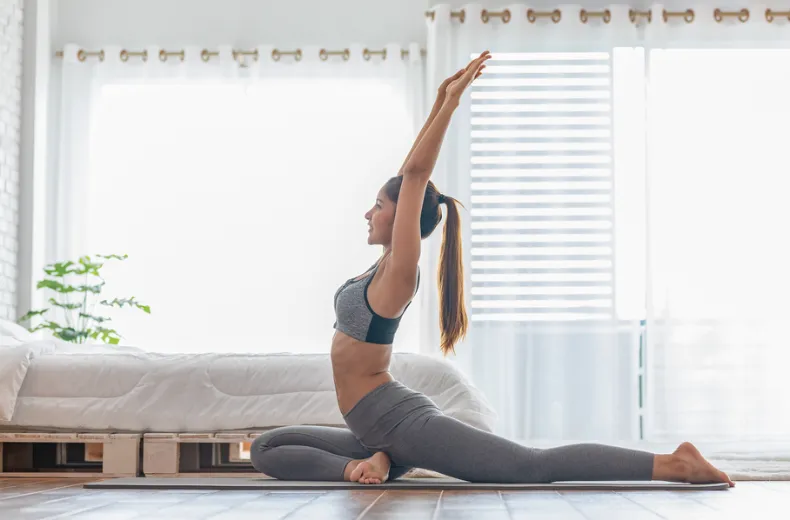
Choosing the right activewear starts with understanding your fitness routine and personal comfort preferences. For activities like yoga or pilates, look for soft, stretchable fabrics and seamless designs that allow full range of motion. High-intensity workouts like running or HIIT require moisture-wicking, breathable materials with good compression support to enhance performance and reduce fatigue. Always consider fit, breathability, and durability based on the type of exercise you do most often.
In addition to function, style and versatility matter—especially for those who wear activewear throughout the day. Opt for pieces that match your lifestyle, whether you prefer sleek monochrome sets, bold prints, or athleisure looks you can wear beyond the gym. Look for features like flatlock seams to reduce chafing, zip pockets for convenience, or reflective elements for outdoor visibility. The right activewear should support your movement, boost your confidence, and transition seamlessly between workouts and daily life.
Here are some factors to be considered when you are choosing activewear.
- Prioritize wear-specific features like high-rise waistbands for yoga or compression seams for gym wear
- Look for moisture-wicking polyester blends, breathable mesh panels, or compression weaves.
- Reinforced stitching, gusseted crotch areas, and quality zippers improve product longevity.
- Choose thoughtful details, flatlock seams, hidden pockets, color blocking—to ensure fashionability matches performance.
- Size charts vary by brand, so always take actual measurements: waist, hips, inseam, chest.
- Check customer reviews for insights on stretch and sizing (runs small vs true-to-size).
- Consider to pick retailers with free return or exchange policies to avoid fit issues.
What Activewear Is Best for Yoga, Running, or Gym Training?
| Activity | Recommended Features | Suggested Fabrics |
| Yoga | High-rise, seamless, squat-proof, 4-way stretch | Nylon/spandex blends, seamless knits |
| Running | Reflective accents, moisture-wicking, weather protection | Polyester blends + DWR coating |
| Gym | Compression support, breathability, sweat control | Polyester/spandex with mesh panels |
| Athleisure | Soft textures, casual lines, versatile pieces | Cotton blends, modal, ponte knits |
Buying Activewear Online vs In Physical Store
Buying activewear online offers convenience, a wider selection, and access to global brands and deals. Online platforms often provide detailed product descriptions, size guides, and customer reviews, helping shoppers make informed decisions from the comfort of their home. It’s ideal for those who know their size or are looking for specific items, like trending styles or eco-friendly fabrics, that might not be available locally.
On the other hand, shopping in-store allows you to try on activewear for the perfect fit, feel the fabric, and assess quality in real time. Physical stores also offer personalized service and immediate purchase without waiting for shipping. It’s especially helpful when you’re unsure about sizing or need activewear for a specific sport or occasion. Both methods have their benefits, and the best choice often depends on personal preferences, urgency, and shopping goals.
Below are pros of shopping activewear online
- Convenience: Shop anytime, anywhere.
- Variety: Explore many brands, sizes, and colors.
- Comparisons: Read reviews and ratings side-by-side.
Below are cons of shopping activewear online
- Fit uncertainty: Hard to try before buying.
- Delayed access: Photo-based shopping may look different in person.
- Return hassle: Costs and delays from returns.
List of the Best Online Stores for Activewear
- Amazon: Broad selection across price ranges, but inconsistent sizing and quality.
- ASOS: Trend-focused athleisure line with easy returns and inclusive size options.
- Shein Active: Ultra-affordable styles, but attention to fabric and stitch quality is needed.
- Lululemon: Reliable fit, free hemming, and Gym-to-Run support.
When buying activewear online, please also pay attention to return policies and size exchanges.
- Free returns through prepaid labels.
- Alteration services like pants hemming at Lululemon.
- Policy timeline with 30-day return windows are standard.
- Condition requirements: Items must be unwashed, with tags, and packaging intact.
Global Trends in Activewear Apparel

Global trends in activewear apparel are being shaped by a growing demand for versatility, sustainability, and performance-driven design. Consumers are increasingly looking for multi-functional pieces that can transition from workout to daily life, fueling the rise of athleisure. Seamless sets, neutral tones, and minimalist designs are trending, while performance features like moisture-wicking, compression, and four-way stretch remain essential for fitness enthusiasts.
Sustainability is another major trend, with more brands using recycled fabrics, plant-based dyes, and eco-friendly packaging to appeal to conscious consumers. Smart textiles, including UV-blocking and odor-resistant materials, are gaining popularity, especially in outdoor and high-performance gear. Globally, social media and influencer marketing continue to drive activewear trends, making style as important as function in today’s competitive market.
Tech-Integrated Activewear
- Smart fabrics that track biometrics like heart rate or muscle activity.
- App-integrated clothing offering tailored training prompts or recovery guides.
Gender-Neutral & Adaptive Designs
- Unisex sizing with subtle tailoring caters to all genders.
- Adaptive clothing features (easy closures, sensory-friendly fabrics) for inclusivity.
Minimalist vs Maximalist Prints
- Minimalist: subdued neutrals, clean silhouettes, functional detailing.
- Maximalist: bold color-blocking, graphic prints, reflective accents for statement-making looks.
Virtual Try-Ons & AI in E-Commerce
- AR try-on tools let shoppers see looks in real-time—reducing returns.
- AI sizing assistants suggest best-fitting items, improving customer satisfaction and conversion rates.
Starting Your Own Activewear Brand
Starting your own activewear brand begins with identifying a niche and understanding your target audience, whether it’s yoga enthusiasts, runners, gym-goers, or athleisure lovers. You’ll need to define your brand identity, create a strong visual presence, and develop a product line that combines performance, comfort, and style. Partnering with reliable manufacturers, especially in countries like China with strong OEM/ODM capabilities, is key to producing quality apparel at competitive prices.
In addition to design and sourcing, building an online presence is crucial. Create a user-friendly website, leverage social media for brand storytelling, and use influencer marketing to gain visibility. Focus on customer feedback, quality control, and delivering value through function and fashion. With the right strategy and commitment, your activewear brand can grow into a strong player in a booming global market.
Follow these key steps to enter the activewear market.
1. Brand Concept & Design
Define your target audience (e.g., eco-conscious yogis, high-performance gym-goers) and create mood boards. Develop tech packs specifying fabrics, measurements, trims, and branding.
2. Finding the Right Manufacturer
- China (Guangdong, Zhejiang, Fujian) for cost-effective mass production.
- Vietnam or India for eco-friendly textiles and small-batch ethical production.
- Local production (USA/EU) for quality control and “Made In” branding.
Evaluate potential suppliers based on certifications, MOQ, lead-time, and communication style. Always request samples.
3. Branding, Packaging, & Fulfillment
- Prioritize eco-conscious packaging, such as recycled polybags or compostable mailers.
- Use branded swing tags, woven labels, and customized boxes to elevate the unboxing experience.
- Explore 3PL fulfillment for scalable logistics, or fulfill in-house via Shopify, Amazon FBA, and other e-commerce platforms.
4. Selling Platforms & Marketing
- Launch on an online platforms with clean UX and visual storytelling.
- Utilize Amazon, especially for Prime-eligible quick shipping.
- Focus on social commerce (Instagram, TikTok, WeChat) using influencer partnerships, live selling, and targeted ads.
FAQ
Activewear refers to clothing made from stretchy, breathable, moisture-wicking fabrics designed for exercise—but suitable for everyday lifestyles. The term encompasses leggings, sports bras, performance tees, joggers, and athleisure pieces that merge function and fashion.
Absolutely! The athleisure trend fuses capabilities like sweat control and stretch with casual design elements like crop tops, joggers, and hoodies. Many consumers wear activewear for work-from-home setups, day-to-day errands, and travel.
Synthetic blends like polyester-spandex deliver optimal stretch, wicking, and durability. Seamless knits and bamboo blends are gaining popularity for their eco-friendliness and ultra-soft handfeel. High-quality pieces often feature odor-resistant and UV-protective fabric technologies.
Activewear is versatile and lifestyle-oriented, suited for various movements like yoga, workout, and daily wear. In contrast, sportswear is sport-specific, tailored for activities like cycling jerseys, soccer kits, or swimwear.
Premium activewear prices reflect advanced technologies, moisture-wicking, compression, anti-odor treatments, along with research into ergonomic fit, honest brand positioning, ethical fabric sourcing, and sustainability practices.
Brands like Nike, Gymshark, Ten Thousand, Lululemon, Alo Yoga, and Fabletics consistently rank high for combining performance, fit, quality, and aesthetics.
Eco-activewear uses recycled polyester, organic cotton, bamboo, or other sustainable fibers. Many brands also implement ethical manufacturing practices and transparently report ingredient sourcing and production processes.
Yes, activewear’s stretchy, breathable fabrics and flexible construction make it ideal for comfort focused daily apparel, especially in warmer climates, travel, or lifestyle settings.
